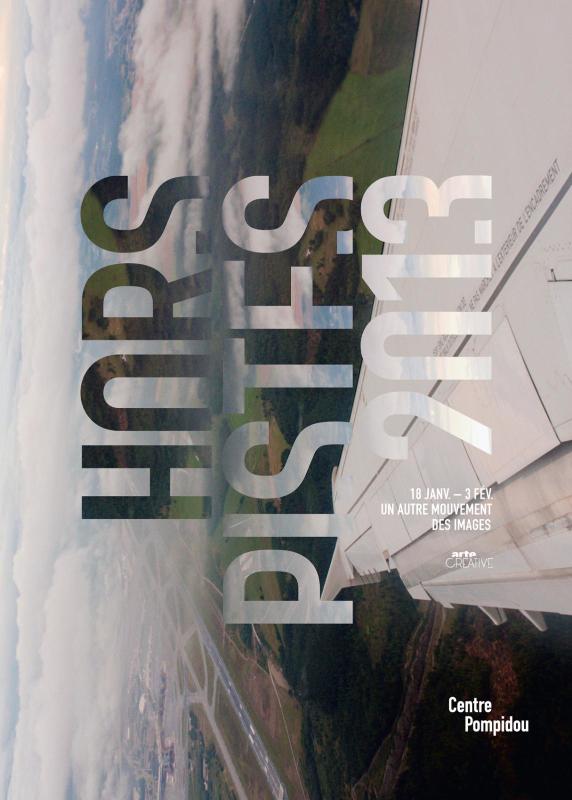Cinema
Hors Pistes 2013
Un autre mouvement des images
18 Jan - �3 Feb 2013

The event is over

For its exploration of contemporary pictures, “Hors Pistes 2013” has adopted the theme of “miniatures”. The special guests of this edition are Jennifer and Kevin McCoy. This pair of US artists took time out to talk to us about the works they will be presenting on this occasion: halfway between micro-reality and gigantic dreams. Jennifer and Kevin McCoy Working with miniatures is a way of gaining ultimate control over the creation of the world. As you gaze down on tiny scenes assembled with meticulous care, you see things from a giant's point of view – one that is all-knowing and domineering. When we are able to encompass the whole of one little world, dreams can come true. Working with miniature cinema, as we have done here for “Hors Pistes 2013”, is a way of introducing disruption, repetition and dreams into this controlled universe. In our sculptures, tiny cameras film the component parts of these micro-worlds. With the images filmed and projected onto a large screen, the miniatures appear hideously large, towering over us – we have suddenly changed places. Miniature cinema sets offer the illusion of a self-contained world, for the camera's eyes only. The same applies to their full-scale depiction. If we struggle to fill in the whitespace and attempt to impose meaning on the fragments arrayed before us, the dream slips out of our grasp. In addition, the mini-actors are duplicated in every scene in which they appear, so we have created a great number of identical characters. The cameras can view a range of details using different scales. Bodies and objects are distorted and fragmented: they do not reveal their true nature to the camera. In this way, the miniature cinema constantly sends us back and forth between viewpoints. We see real objects, at the correct scale, only to rise above them, turn, see the image projected above us and become part of the show ourselves – and so the cycle begins again. In the catalogue of Jennifer and Kevin McCoy's first exhibition of “miniature” works, in 2003, artist and writer Jim Supanick quotes Victor Hugo: “In Freiburg, I had long forgotten the huge landscape before my gaze in my fascination for the patch of grass on which I was sitting. I was on a small, unkempt bump on the hill. There was a whole world before me. Beetles marched slowly beneath the deep fibres of vegetation; umbrella-shaped hemlock flowers imitated Italian pines; [...] near a puddle that would scarcely have filled a saucer, I spied a worm, rising from the clay and twisting its way skyward, rending the air like some serpent from before the flood: in its microscopic world, perhaps there was also a Hercules to bring it down or a Cuvier to describe it. In short, that universe was just as huge as the other.” Victor Hugo, The Rhine, 1842.

For its exploration of contemporary pictures, “Hors Pistes 2013” has adopted the theme of “miniatures”. The special guests of this edition are Jennifer and Kevin McCoy. This pair of US artists took time out to talk to us about the works they will be presenting on this occasion: halfway between micro-reality and gigantic dreams.
Jennifer y Kevin McCoy
Working with miniatures is a way of gaining ultimate control over the creation of the world. As you gaze down on tiny scenes assembled with meticulous care, you see things from a giant’s point of view – one that is all-knowing and domineering. When we are able to encompass the whole of one little world, dreams can come true. Working with miniature cinema, as we have done here for “Hors Pistes 2013”, is a way of introducing disruption, repetition and dreams into this controlled universe. In our sculptures, tiny cameras film the component parts of these micro-worlds. With the images filmed and projected onto a large screen, the miniatures appear hideously large, towering over us – we have suddenly changed places. Miniature cinema sets offer the illusion of a self-contained world, for the camera’s eyes only. The same applies to their full-scale depiction. If we struggle to fill in the whitespace and attempt to impose meaning on the fragments arrayed before us, the dream slips out of our grasp. In addition, the mini-actors are duplicated in every scene in which they appear, so we have created a great number of identical characters. The cameras can view a range of details using different scales. Bodies and objects are distorted and fragmented: they do not reveal their true nature to the camera. In this way, the miniature cinema constantly sends us back and forth between viewpoints. We see real objects, at the correct scale, only to rise above them, turn, see the image projected above us and become part of the show ourselves – and so the cycle begins again.
In the catalogue of Jennifer and Kevin McCoy’s first exhibition of “miniature” works, in 2003, artist and writer Jim Supanick quotes Victor Hugo: “In Freiburg, I had long forgotten the huge landscape before my gaze in my fascination for the patch of grass on which I was sitting. I was on a small, unkempt bump on the hill. There was a whole world before me. Beetles marched slowly beneath the deep fibres of vegetation; umbrella-shaped hemlock flowers imitated Italian pines; [...] near a puddle that would scarcely have filled a saucer, I spied a worm, rising from the clay and twisting its way skyward, rending the air like some serpent from before the flood: in its microscopic world, perhaps there was also a Hercules to bring it down or a Cuvier to describe it. In short, that universe was just as huge as the other.” Victor Hugo, The Rhine, 1842.
When
every days except tuesdays







































